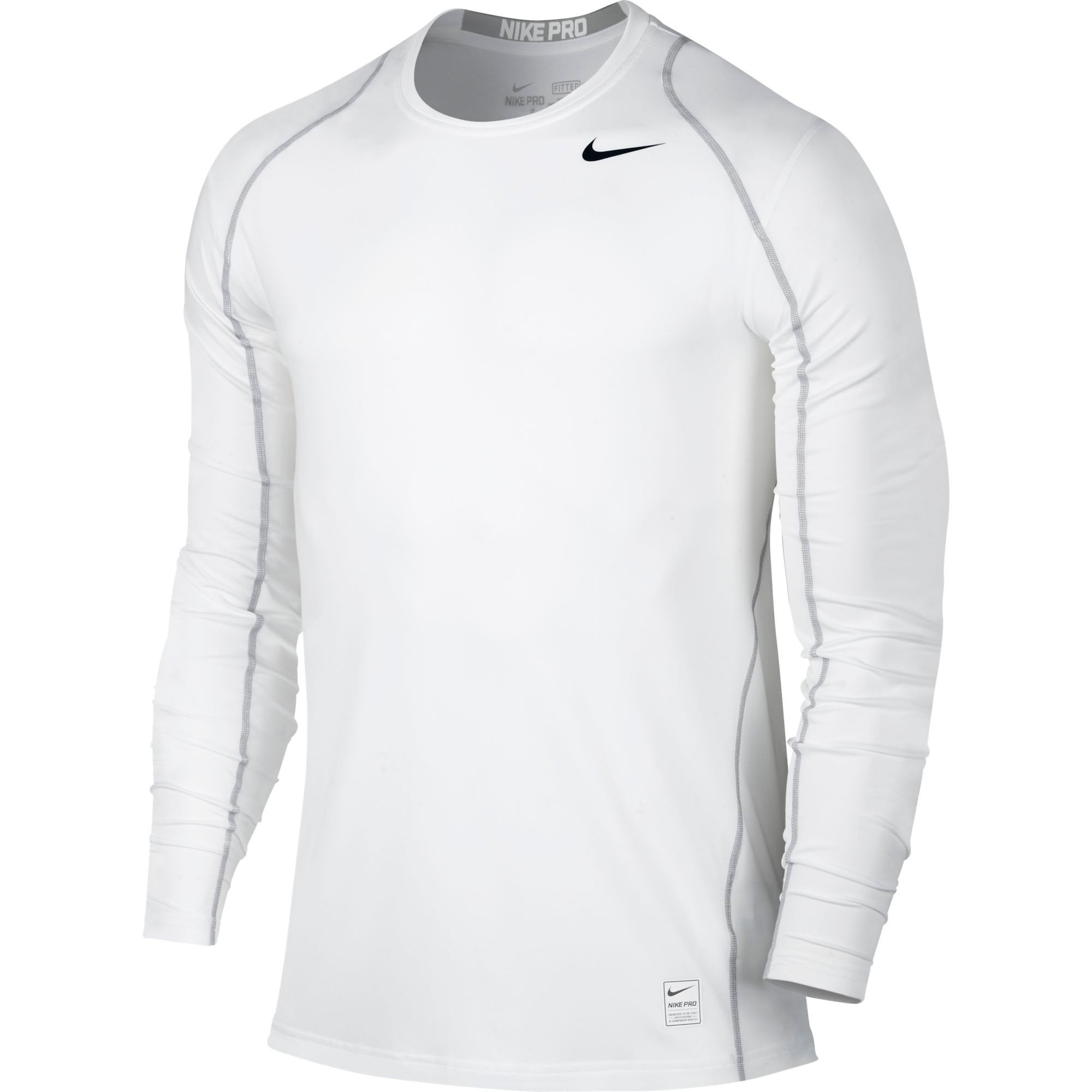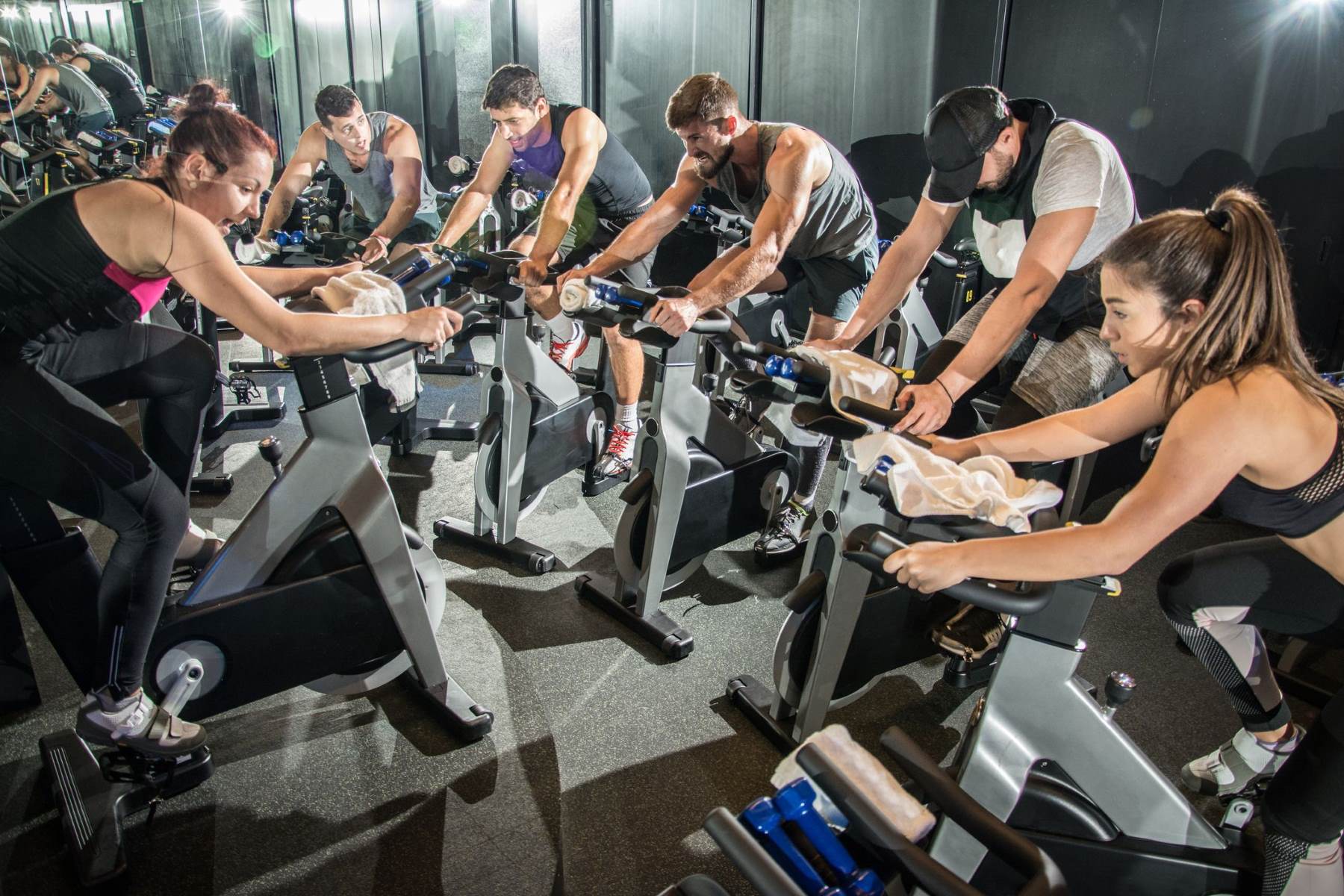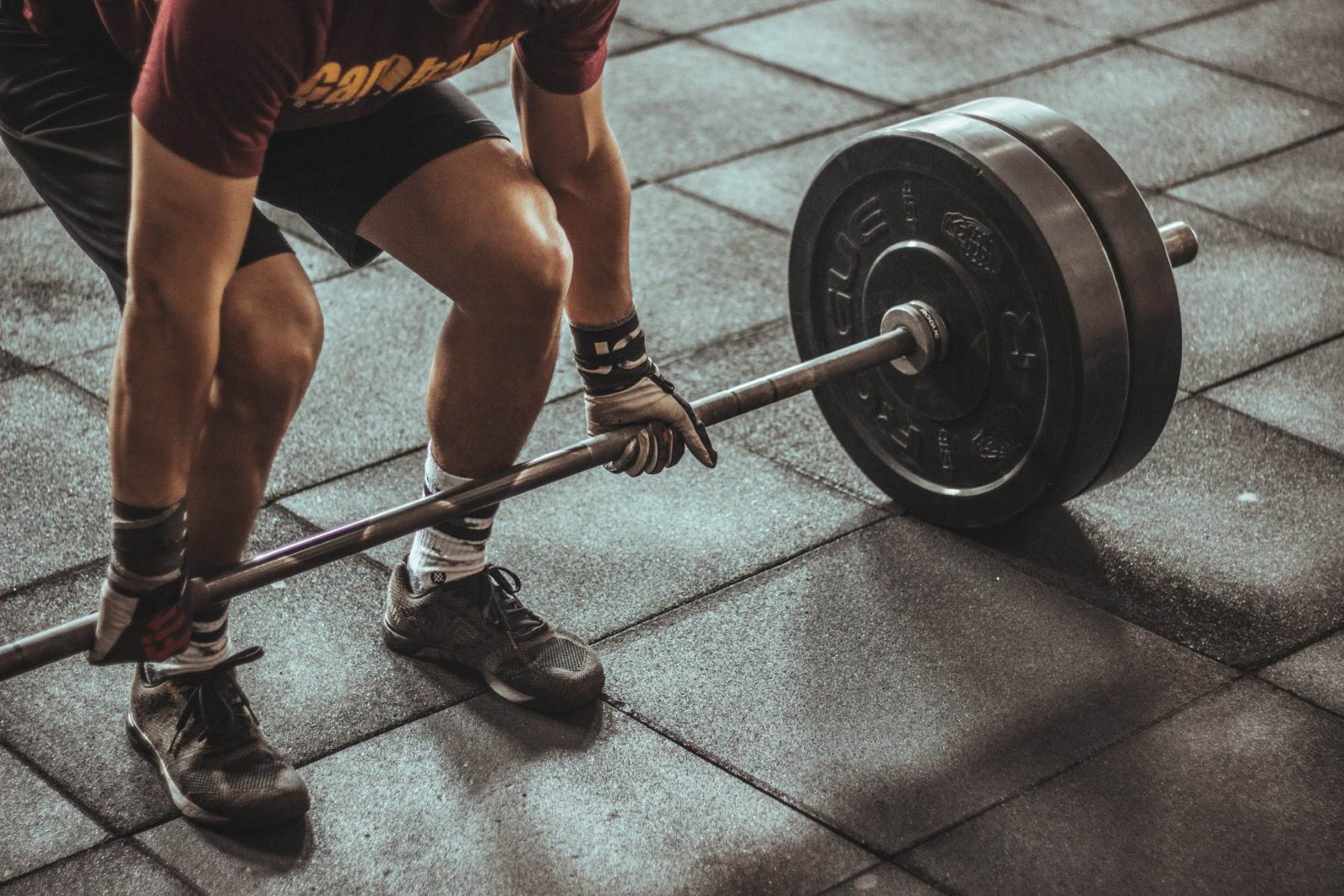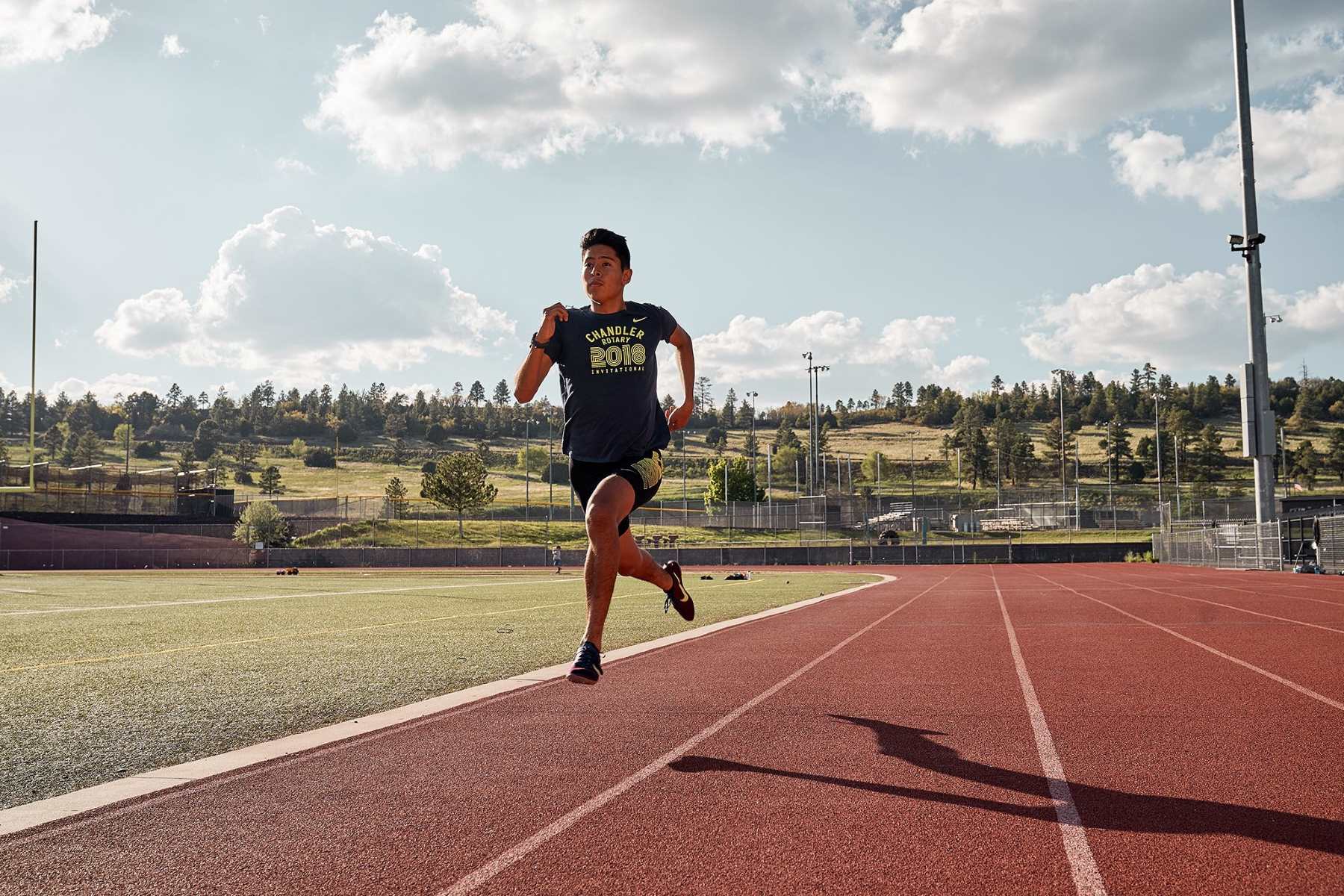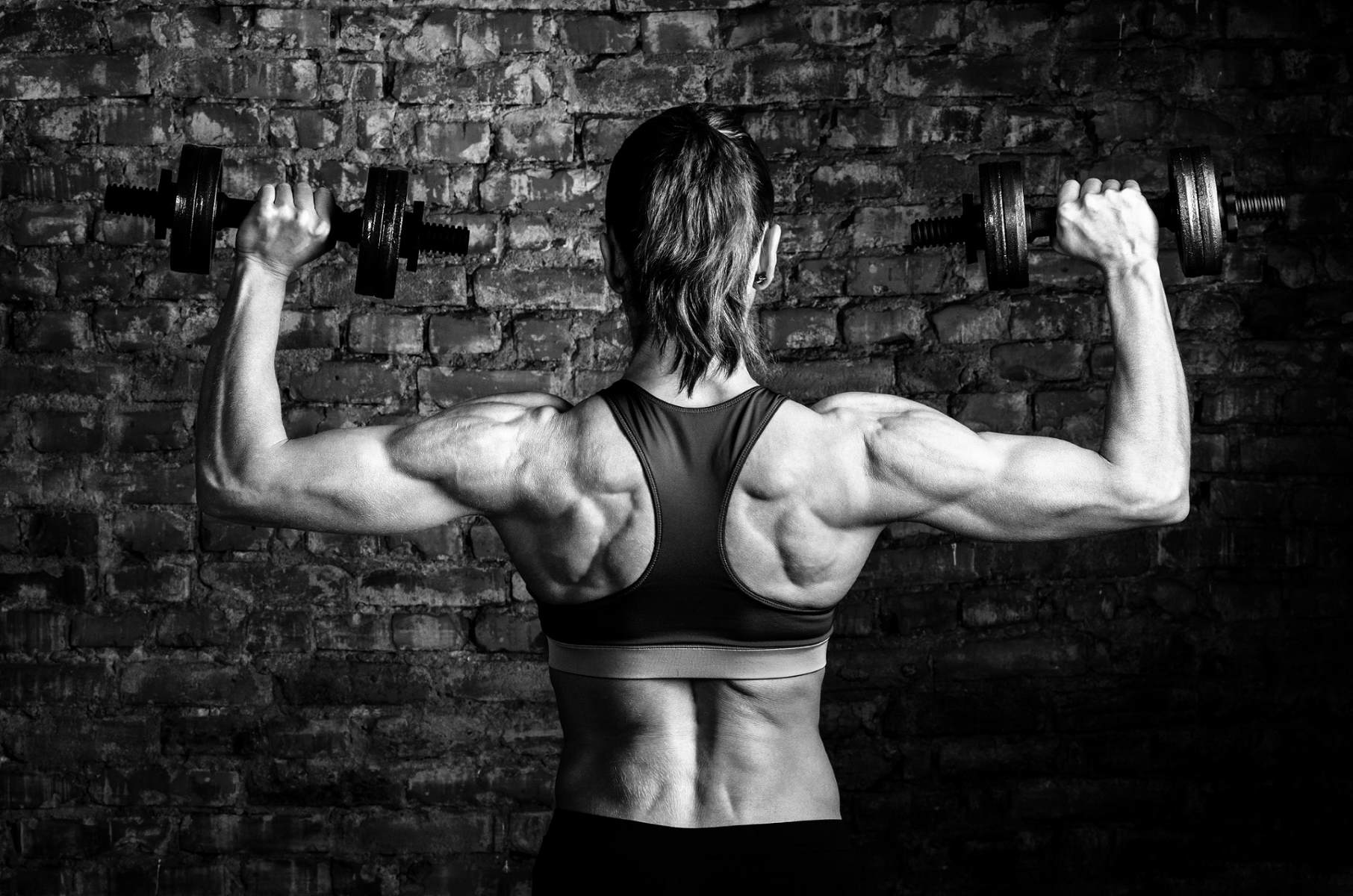

Featured
What Should I Workout With Shoulders
Modified: March 2, 2024
Looking for featured shoulder workouts? Discover what you should workout with shoulders and achieve your fitness goals with our expert tips.
Introduction
The shoulders are an essential part of the upper body, playing a crucial role in various activities and movements. Whether you’re an athlete, a fitness enthusiast, or simply looking to improve your overall strength and functionality, incorporating shoulder workouts into your routine is vital. Strong and well-developed shoulders not only enhance your appearance but also contribute to improved posture, stability, and injury prevention.
In this article, we will explore the importance of shoulder workouts, discuss the anatomy of the shoulders, and provide a range of exercises you can incorporate into your training regimen. Whether you have access to gym equipment or prefer bodyweight exercises, we have you covered. We will also provide workout routines suitable for beginners as well as intermediate and advanced trainers.
Before diving into the exercises, it’s essential to understand the anatomy of the shoulders. The shoulder joint is a complex structure consisting of several muscles, ligaments, and tendons. The primary muscles involved are the deltoids, which are divided into three parts: the anterior deltoid, medial deltoid, and posterior deltoid. These muscles provide a wide range of motion, allowing you to perform various pressing, pulling, and rotational movements.
Now that you have an overview let’s delve into the different types of shoulder exercises you can incorporate into your routine. Whether you have access to dumbbells, barbells, cables, or just your own body weight, there are plenty of options to challenge and strengthen your shoulders.
Importance of Shoulder Workouts
Shoulder workouts are not just about aesthetics; they play a crucial role in overall strength, functionality, and injury prevention. Here are some reasons why incorporating shoulder workouts into your fitness routine is essential:
- Improved Upper Body Strength: Strong shoulders contribute to improved upper body strength and power. They play a significant role in pressing movements like bench presses, overhead presses, and push-ups. Building strong shoulders will enhance your performance in these exercises and allow you to lift heavier weights.
- Enhanced Posture: Weak shoulders can lead to rounded shoulders and poor posture. Shoulder workouts help strengthen the muscles responsible for maintaining good posture. This not only helps you stand tall and confident but also alleviates unnecessary strain on the neck and upper back.
- Injury Prevention: Strengthening the shoulder muscles can help prevent injuries, particularly those related to the rotator cuff. The rotator cuff consists of four small muscles that stabilize the shoulder joint. Engaging in regular shoulder exercises helps maintain the stability and integrity of the shoulder joint, reducing the risk of injuries such as strains, tears, and impingements.
- Increased Range of Motion: Performing shoulder exercises that target all three parts of the deltoids can improve your overall range of motion. This is particularly beneficial for athletes involved in sports that require overhead movements, such as basketball, volleyball, and swimming.
- Balanced Upper Body: Strong shoulders contribute to a balanced upper body physique. They add width to your frame and create that desirable “V” shape. By developing your shoulders, you will achieve a symmetrically sculpted upper body.
Overall, shoulder workouts are not only about building well-defined shoulders but also about improving overall strength, stability, and functionality. Whether you’re an athlete, a fitness enthusiast, or simply looking to improve your posture and prevent injuries, incorporating shoulder exercises into your routine is crucial for a well-rounded fitness program.
Anatomy of the Shoulders
To truly understand the importance of shoulder workouts, it’s crucial to have a basic understanding of the anatomy of the shoulders. The shoulder joint, also known as the glenohumeral joint, is a complex structure composed of several muscles, ligaments, and tendons.
The main muscles responsible for the movement and stability of the shoulder joint are the deltoids. The deltoids are divided into three parts: the anterior deltoid, medial deltoid, and posterior deltoid. These muscles are responsible for various movements, including flexion, extension, abduction, and rotation.
The anterior deltoid is located on the front of the shoulder. It is responsible for shoulder flexion, which involves raising the arm forward. It is highly engaged during exercises like front raises and shoulder presses.
The medial deltoid is situated in the middle of the shoulder. It contributes to shoulder abduction, which involves raising the arm out to the side. Exercises like lateral raises specifically target this muscle, helping to develop broader shoulders.
The posterior deltoid is located at the back of the shoulder. It is responsible for shoulder extension and external rotation. Movements like bent-over lateral raises and reverse flyes target the posterior deltoid, adding width to the upper back and shoulder region.
In addition to the deltoids, several other muscles contribute to shoulder movement and stability. The rotator cuff muscles, including the supraspinatus, infraspinatus, teres minor, and subscapularis, play a crucial role in maintaining the stability of the shoulder joint. These muscles work together to keep the head of the humerus (upper arm bone) centered in the shoulder socket and prevent dislocations or impingements.
The trapezius muscle, located in the upper back and neck region, also plays a role in shoulder movement and stability. It helps retract and depress the scapulae (shoulder blades) and assists in upward rotation during movements like shoulder shrugs and rows.
Understanding the anatomy of the shoulders is vital for effectively targeting and developing these muscles. By incorporating shoulder workouts that target all three parts of the deltoids and the supporting muscles, you can ensure balanced development, strength, and stability of the shoulders.
Types of Shoulder Exercises
When it comes to shoulder workouts, there are various exercises that target the deltoids and other muscles of the shoulders. Whether you have access to gym equipment or prefer bodyweight exercises, there are plenty of options to choose from. Let’s explore the different types of shoulder exercises:
- Dumbbell Shoulder Exercises: Dumbbells are versatile and widely available, making them a popular choice for shoulder workouts. Dumbbell exercises such as overhead presses, lateral raises, and front raises effectively target the deltoids while allowing for a full range of motion.
- Barbell Shoulder Exercises: Barbell exercises like the standing military press and push press are excellent compound movements that engage the shoulders, along with other muscles such as the triceps and core. They provide the opportunity to lift heavier weights and build overall upper body strength.
- Cable Shoulder Exercises: Cable machines offer constant tension throughout the movement, making them great for shoulder workouts. Cable exercises like cable lateral raises, face pulls, and cable external rotations provide a unique resistance that challenges the muscles in different ways.
- Bodyweight Shoulder Exercises: If you prefer bodyweight exercises or do not have access to equipment, there are still plenty of options for challenging your shoulders. Exercises like push-ups, handstand push-ups, pike push-ups, and dive bomber push-ups all target the shoulders while also engaging the chest and triceps.
- Resistance Band Shoulder Exercises: Resistance bands are portable and versatile tools that can add resistance to your shoulder workouts. With resistance bands, you can perform exercises such as lateral raises, front raises, and external rotations to effectively target the deltoids. They also help improve stability and control.
When designing your shoulder workout routine, it’s essential to include a variety of exercises from different categories to ensure you target the different parts of the deltoids and engage the supporting muscles. This will lead to well-rounded shoulder development and overall strength.
Now that we have explored the types of shoulder exercises available, let’s move on to specific shoulder exercises you can incorporate into your workout routine.
Dumbbell Shoulder Exercises
Dumbbells are a versatile piece of equipment that can be used to target the deltoids and build strength in the shoulders. Here are some effective dumbbell shoulder exercises:
- Overhead Press: The overhead press is a compound movement that targets the entire shoulder complex. Stand with your feet shoulder-width apart, hold a dumbbell in each hand at shoulder level, palms facing forward. Press the dumbbells overhead while keeping your core engaged. Lower the dumbbells back to shoulder level and repeat for the desired number of repetitions.
- Lateral Raise: Lateral raises primarily target the medial deltoids, which contribute to broadening your shoulders. Stand with your feet shoulder-width apart, hold a dumbbell in each hand at your sides, palms facing inward. Slowly raise your arms out to the sides until they are parallel to the ground. Pause at the top and then lower the dumbbells back to the starting position.
- Front Raise: Front raises engage the anterior deltoids, which play a significant role in shoulder flexion. Stand with your feet shoulder-width apart, hold a dumbbell in each hand in front of your thighs, palms facing your body. Keeping your arms straight, lift the dumbbells up until they are parallel to the ground. Lower them back to the starting position in a controlled manner.
- Bent-Over Lateral Raise: This exercise targets the posterior deltoids and helps add width to your upper back. Stand with your feet hip-width apart, slightly bend your knees, and hinge forward at the hips while keeping your back straight. Hold a dumbbell in each hand, palms facing each other, and lift your arms out to the sides until they are parallel to the ground. Slowly lower the dumbbells back to the starting position.
- Arnold Press: The Arnold press is a variation of the overhead press that targets all three parts of the deltoids. Start with the dumbbells at shoulder level, palms facing your body. As you press the dumbbells overhead, rotate your wrists so that your palms face forward. Reverse the motion as you lower the dumbbells back to shoulder level, rotating your wrists back to the starting position.
When performing dumbbell shoulder exercises, it’s important to maintain proper form, engage your core for stability, and use an appropriate weight that allows you to perform each movement with control. Gradually increase the weight as your strength and form improve.
Incorporating these dumbbell shoulder exercises into your workout routine will challenge and strengthen your deltoids, leading to well-rounded shoulder development and improved upper body strength.
Barbell Shoulder Exercises
Barbell exercises are effective for building overall shoulder strength and stability. They allow for the use of heavier weights and engage multiple muscle groups in the upper body. Here are some barbell shoulder exercises to incorporate into your routine:
- Standing Military Press: The standing military press is a classic compound exercise that targets the deltoids, along with the triceps and core. Stand with your feet shoulder-width apart, hold a barbell with an overhand grip at shoulder level. Press the bar overhead until your arms are fully extended. Lower the barbell back to shoulder level and repeat for the desired number of repetitions.
- Push Press: The push press allows you to generate power from your lower body to drive the barbell overhead. Start with the barbell at shoulder level, slightly dip your knees, and then explosively drive through your legs while simultaneously pressing the barbell overhead. Lower the barbell back to shoulder level and repeat.
- Upright Row: The upright row targets the deltoids, along with the trapezius and biceps. Stand with your feet shoulder-width apart, hold the barbell with an overhand grip, hands slightly narrower than shoulder-width apart. Lift the barbell up towards your chin while keeping it close to your body. Lower the barbell back down and repeat.
- Behind-the-Neck Press: The behind-the-neck press specifically targets the medial and posterior deltoids. Rest a barbell on your traps behind your neck, grip the bar with an overhand grip wider than shoulder-width apart. Press the barbell overhead until your arms are fully extended. Lower the barbell back down behind your neck and repeat.
- Shrug: While the shrug primarily targets the trapezius muscles, it also engages the deltoids. Stand with your feet shoulder-width apart, hold the barbell in front of your thighs with an overhand grip. Shrug your shoulders, lifting the barbell as high as possible. Lower the barbell back down and repeat.
When performing barbell shoulder exercises, it’s crucial to maintain proper form, especially with exercises like the behind-the-neck press, which may not be suitable for everyone due to individual shoulder mobility and flexibility. Choose an appropriate weight that allows you to perform each exercise with control and proper technique.
Incorporating these barbell shoulder exercises into your routine will help develop strength and stability in your shoulders, as well as improve overall upper body power and performance.
Cable Shoulder Exercises
Cable machines provide constant tension throughout the range of motion, making them excellent for targeting the deltoids and increasing shoulder stability. Incorporating cable shoulder exercises into your routine can help improve muscle balance and overall upper body strength. Here are some effective cable exercises for your shoulders:
- Cable Lateral Raise: Attach a D-handle to a low pulley and stand with your side facing the cable machine. Grab the handle with the hand opposite to the side you are working on. Raise your arm out to the side until it is parallel to the ground, keeping a slight bend in your elbow. Lower back down and repeat for the desired number of repetitions before switching sides.
- Face Pull: Attach a rope or double D-handle to the high pulley of the cable machine. Stand facing the machine with your feet shoulder-width apart and grab the handles with an overhand grip. Pull the handles towards your face, squeezing your shoulder blades together. Pause for a moment and then return to the starting position.
- Cable Front Raise: Attach a straight bar or rope to the low pulley and stand with your back towards the machine. Hold the bar or rope with an overhand grip and rest it on the front of your thighs. Raise the bar or rope in front of you, keeping your arms straight until they are parallel to the ground. Slowly lower the weight back down and repeat.
- Cable External Rotation: Attach a D-handle to the low pulley and stand with your side facing the cable machine. Hold the handle with the hand of the arm you want to work on. Keep your elbow bent at a 90-degree angle and your upper arm parallel to the ground. Rotate your forearm away from your body until it is perpendicular to the ground. Slowly return to the starting position and repeat.
- Single-Arm Cable Press: Attach a D-handle to the high pulley and stand with your side facing the machine. Grab the handle with the hand opposite to the side you are working on. Start with your elbow bent and in line with your shoulder. Press the handle down and across your body until your arm is fully extended, then slowly return to the starting position.
When performing cable shoulder exercises, make sure to maintain proper form, focusing on controlled and smooth movements. Adjust the weight to a challenging but manageable level that allows you to maintain good form throughout the exercise.
Incorporating these cable shoulder exercises into your routine will help target different parts of the deltoids, improve shoulder stability, and enhance your overall upper body strength and functionality.
Bodyweight Shoulder Exercises
Even without access to equipment, you can still effectively target and strengthen your shoulders with bodyweight exercises. These exercises not only engage the deltoids but also challenge your core stability. Here are some bodyweight shoulder exercises to include in your routine:
- Push-Ups: Push-ups are a classic exercise that targets the chest, triceps, and shoulders. Start in a high plank position with your hands slightly wider than shoulder-width apart. Lower your body until your chest almost touches the ground, keeping your elbows close to your body. Push back up to the starting position and repeat for the desired number of repetitions.
- Handstand Push-Ups: Handstand push-ups are an advanced variation of the push-up that specifically targets the shoulders. Start in a handstand position against a wall or using parallettes. Lower your body by bending your elbows until your head almost touches the ground, then push back up to the starting position. Modify this exercise by performing pike push-ups or using a resistance band for assistance if needed.
- Pike Push-Ups: Pike push-ups primarily target the shoulders and engage the deltoids. Start in a push-up position, but with your hips raised and your body in an inverted V shape. Lower your head towards the ground while keeping your elbows close to your body. Push back up to the starting position and repeat.
- Dive Bomber Push-Ups: Dive bomber push-ups engage the shoulders, chest, and triceps. Start in a downward dog position with your hands slightly wider than shoulder-width apart. Lower your head and shoulders towards the ground while moving your chest forward and through your arms. Push your hips up and back to return to the starting position. Repeat for the desired number of repetitions.
- Plank Taps: Plank taps challenge shoulder stability while also engaging the core. Start in a high plank position with your hands directly under your shoulders. Lift one hand off the ground and tap the opposite shoulder, then place it back down. Alternate sides and continue tapping shoulders while maintaining a strong plank position.
When performing bodyweight shoulder exercises, focus on maintaining proper form and engaging the correct muscles. Aim for controlled and smooth movements, making sure to listen to your body and modify exercises as needed to ensure safety and effectiveness.
By incorporating these bodyweight shoulder exercises into your routine, you can effectively target and strengthen your shoulders without the need for equipment, helping you develop upper body strength and stability.
Resistance Band Shoulder Exercises
Resistance bands are portable, affordable, and versatile tools that can be used to target and strengthen the shoulders. They provide constant tension throughout the movement, helping to engage the muscles effectively. Incorporating resistance band shoulder exercises into your routine can improve shoulder stability, increase muscular endurance, and enhance overall upper body strength. Here are some effective resistance band exercises for your shoulders:
- Lateral Raises: Stand with your feet shoulder-width apart and place the resistance band under both feet. Grasp the handles or ends of the band with your palms facing your thighs. Keep a slight bend in your elbows and raise your arms out to the sides until they are parallel to the ground. Slowly lower them back down and repeat.
- Front Raises: Stand on the middle of the resistance band with your feet hip-width apart. Hold the handles or ends of the band with your palms facing your thighs. With a slight bend in your elbows, raise your arms straight in front of you until they are parallel to the ground. Lower them back down in a controlled manner and repeat.
- External Rotations: Anchor the resistance band at waist height. Stand perpendicular to the anchor point with your elbow bent at a 90-degree angle, keeping your upper arm close to your side. Grasp the band and rotate your forearm away from your body, keeping your elbow pressed against your side. Slowly return to the starting position and repeat.
- W Raises: Stand on the middle of the resistance band with your feet shoulder-width apart. Hold the handles or ends of the band with your palms facing inward. Start with your arms straight down at your sides, then raise them out to the sides and up at a slight angle to form a “W” shape. Pause for a moment at the top, then lower your arms back down and repeat.
- Overhead Press: Stand on the resistance band with your feet shoulder-width apart. Grasp the handles or ends of the band and bring your hands up to shoulder level, with your palms facing forward. Press the band straight overhead until your arms are fully extended. Lower the band back down with control and repeat.
When performing resistance band shoulder exercises, maintain proper form and focus on controlled movements throughout. It’s important to choose a resistance band with an appropriate level of tension that challenges your muscles without compromising your form. Gradually increase the tension or try different resistance bands as your strength improves.
Incorporating these resistance band shoulder exercises into your routine will engage your deltoids and supporting muscles, helping you develop strength, stability, and functionality in your shoulders.
Shoulder Workout Routine for Beginners
If you’re new to shoulder workouts, it’s essential to start with a routine that focuses on proper form and gradually increases intensity. This beginner shoulder workout routine will help you develop strength, stability, and endurance in your shoulders. Remember to warm up before starting the workout and listen to your body throughout the exercises. Here’s a sample shoulder workout routine for beginners:
- Dumbbell Overhead Press: 3 sets of 10-12 reps. Sit on a bench or stand with your feet shoulder-width apart. Hold a pair of dumbbells at shoulder level, palms facing forward. Press the dumbbells overhead until your arms are fully extended. Lower them back down with control and repeat.
- Lateral Raises: 3 sets of 10-12 reps. Stand with your feet shoulder-width apart, holding dumbbells at your sides. Raise your arms out to the sides until they are parallel to the ground. Slowly lower them back down and repeat.
- Front Raises: 3 sets of 10-12 reps. Stand with your feet shoulder-width apart, holding dumbbells in front of your thighs. Raise your arms straight in front of you until they are parallel to the ground. Lower them back down in a controlled manner and repeat.
- Face Pulls: 3 sets of 10-12 reps. Attach a rope or double D-handle to the cable machine at chest height. Stand facing the machine, grip the handles with an overhand grip and arms extended. Pull the handles towards your face, squeezing your shoulder blades together. Pause for a moment and then return to the starting position.
- Pike Push-Ups: 3 sets of 10-12 reps. Start in a push-up position with your hips raised and your body in an inverted V shape. Lower your head towards the ground while keeping your elbows close to your body. Push back up to the starting position and repeat.
Perform this beginner shoulder workout routine two to three times per week, allowing at least one day of rest between workouts. Start with lighter weights and focus on proper form and technique for each exercise. As you progress, gradually increase the weight or resistance to continue challenging your muscles.
Remember to cool down after your workout and stretch your shoulder muscles to promote flexibility and prevent muscle tightness or imbalances. It’s also important to listen to your body and modify any exercises if you experience pain or discomfort.
Consistency is key when it comes to seeing progress in your shoulder strength and development. Stick to this routine and gradually increase the intensity as you gain confidence and improve your fitness level.
Shoulder Workout Routine for Intermediate and Advanced Trainers
If you’re an intermediate or advanced trainer looking to take your shoulder workouts to the next level, it’s important to challenge your muscles and vary your routine. This shoulder workout routine will help you continue building strength, size, and definition in your shoulders. Before starting the routine, make sure to warm up properly and always use proper form. Here’s a sample shoulder workout routine for intermediate and advanced trainers:
- Barbell Shoulder Press: 4 sets of 8-10 reps. Start with the barbell resting on your shoulders. Press the barbell overhead until your arms are fully extended. Lower it back down with control and repeat.
- Dumbbell Lateral Raises: 4 sets of 10-12 reps. Stand with your feet hip-width apart, holding dumbbells at your sides. Raise your arms out to the sides until they are parallel to the ground. Slowly lower them back down and repeat.
- Arnold Press: 4 sets of 8-10 reps. Start with dumbbells at shoulder level, palms facing your body. As you press the dumbbells overhead, rotate your wrists so that your palms face forward. Reverse the motion as you lower the dumbbells back to shoulder level.
- Face Pulls: 4 sets of 10-12 reps. Attach a rope or double D-handle to the cable machine at chest height. Stand facing the machine, grip the handles with an overhand grip and arms extended. Pull the handles towards your face, squeezing your shoulder blades together. Pause for a moment and then return to the starting position.
- Push-ups with a Twist: 4 sets of 10-12 reps. Perform push-ups, but at the top of each rep, twist your torso to the left and extend your left arm towards the ceiling. Return to the starting position and repeat, alternating sides with each rep.
- Upright Row: 4 sets of 10-12 reps. Stand with your feet shoulder-width apart, holding a barbell with an overhand grip, hands slightly narrower than shoulder-width apart. Lift the barbell up towards your chin while keeping it close to your body. Lower it back down and repeat.
Perform this shoulder workout routine two to three times per week, allowing at least one day of rest between workouts. Use weights that are challenging but still allow you to maintain proper form and technique for each exercise. You may also consider incorporating drop sets, supersets, or pyramid sets to further intensify your workouts.
Remember to cool down and stretch your shoulder muscles after the workout to promote flexibility and prevent muscle tightness. If you experience any pain or discomfort during the exercises, modify or decrease the weight accordingly.
Continually monitor your progress and adjust the weights and repetitions as needed. As an intermediate or advanced trainer, it’s important to continue challenging yourself to avoid plateaus and promote continuous growth and improvement in your shoulder strength and development.
Common Shoulder Injuries and Prevention Tips
While shoulder workouts are beneficial for strength and mobility, it’s important to be aware of common shoulder injuries and take preventive measures to avoid them. Here are some common shoulder injuries that can occur and tips to help prevent them:
- Rotator Cuff Strain or Tear: The rotator cuff can be susceptible to strains or tears due to overuse or improper form. To prevent this injury, always warm up before your workouts and gradually increase the intensity and weight. Focus on maintaining proper form and technique, and avoid excessive or repetitive overhead movements without sufficient strength and support.
- Shoulder Impingement: Shoulder impingement occurs when structures in the shoulder become irritated or compressed. It can be caused by repetitive overhead movements or poor posture. To prevent this injury, focus on maintaining good posture throughout the day, especially during exercises. Avoid excessive internal rotation of the shoulder and incorporate exercises that strengthen the muscles that support proper shoulder alignment.
- Bursitis: Bursitis is the inflammation of the bursa sacs in the shoulder, often caused by repetitive motions or direct trauma. To prevent bursitis, it’s important to gradually increase the intensity and duration of your workouts. Avoid repetitive movements that place excessive stress on the shoulder and listen to your body if you experience any pain or discomfort.
- Shoulder Dislocation: A shoulder dislocation can occur when the humerus bone comes out of the socket. It is often caused by a sudden impact or a sudden twisting motion. To prevent dislocations, focus on strengthening the muscles around the shoulder joint, particularly the rotator cuff muscles. Be cautious when performing exercises or activities that involve sudden or jerky movements, and always use proper form and technique.
- Shoulder Instability: Shoulder instability can occur when the structures that hold the joint together become relaxed or compromised. To prevent shoulder instability, focus on strengthening the muscles around the shoulder joint through exercises that target the surrounding muscles. Incorporate exercises that improve shoulder stability, such as resistance band external rotations and stability ball exercises.
In addition to these preventive tips, it’s important to listen to your body, avoid overtraining, and provide adequate rest and recovery for your shoulders. If you experience persistent pain or discomfort, it’s recommended to seek medical advice to properly diagnose and treat any potential shoulder injuries. Remember to warm up before each workout, use proper form, and gradually progress your workouts to build strength and stability in your shoulders.
By being proactive and taking precautions, you can minimize the risk of shoulder injuries and continue to enjoy the benefits of shoulder workouts while maintaining a healthy and functional shoulder joint.
Conclusion
Shoulder workouts are essential for overall strength, functionality, and posture. By targeting the deltoids and supporting muscles, you can improve upper body strength, stability, and prevent injuries. Whether you’re a beginner, intermediate, or advanced trainer, there are various exercises and workout routines you can incorporate into your training regimen.
Throughout this article, we’ve explored the importance of shoulder workouts and discussed the anatomy of the shoulders. We’ve also covered different types of shoulder exercises, including dumbbell, barbell, cable, bodyweight, and resistance band exercises. Additionally, we provided sample workout routines for beginners as well as intermediate and advanced trainers.
It’s crucial to remember the importance of proper form and technique when performing shoulder exercises. Gradually increase the intensity and weight, and always listen to your body to avoid overtraining and prevent injuries. Warming up before each workout and incorporating stretches and cool-downs are also essential practices to maintain shoulder health.
By incorporating shoulder workouts into your fitness routine and following preventive tips, you can develop strong, stable, and well-defined shoulders while minimizing the risk of injuries. Remember to consult with a healthcare professional or trainer if you have any specific concerns or pre-existing conditions related to your shoulders.
So, let’s get started and prioritize our shoulder health in our fitness journey. Strong and healthy shoulders will not only enhance our physique but also contribute to better overall strength, stability, and functionality in our daily lives.
